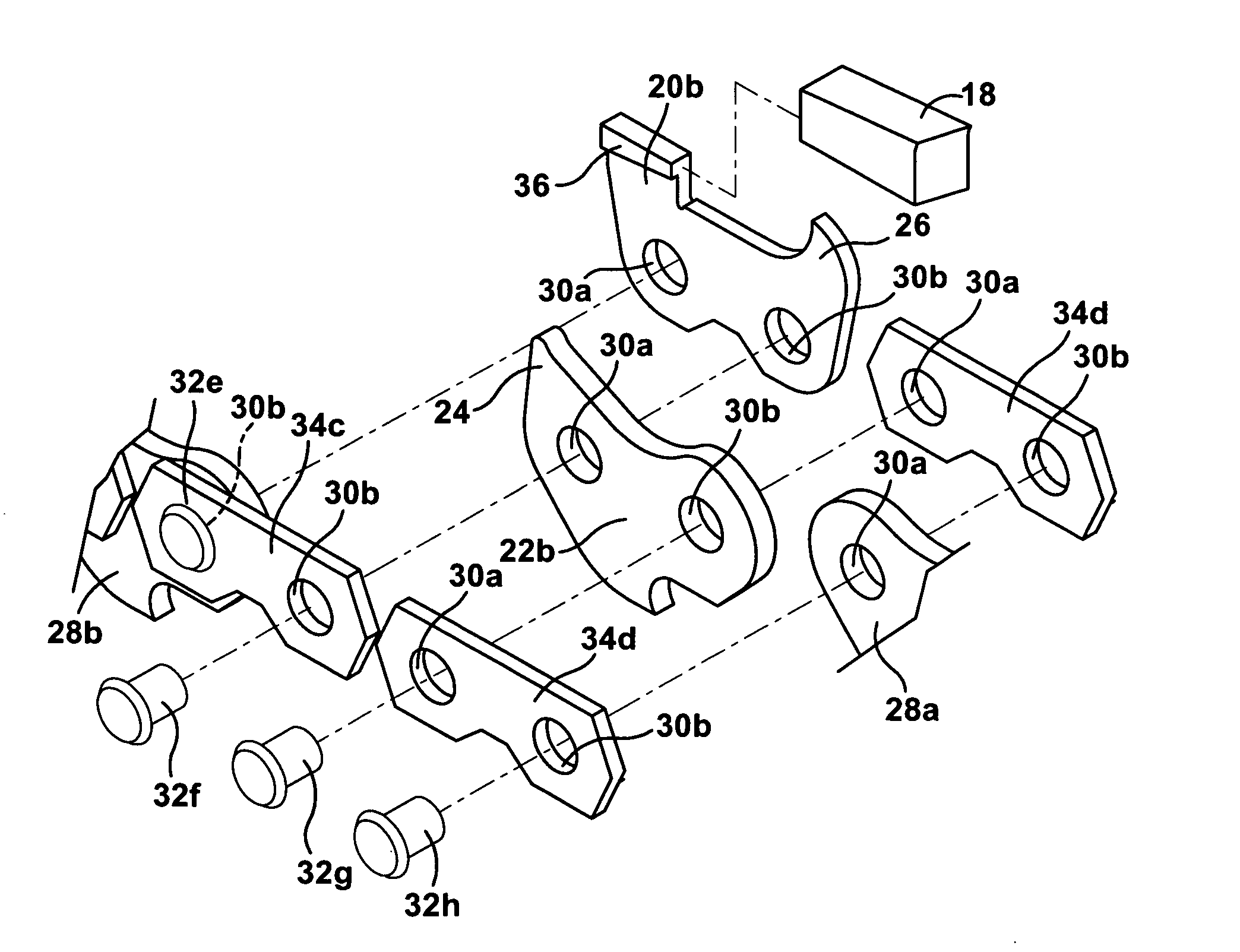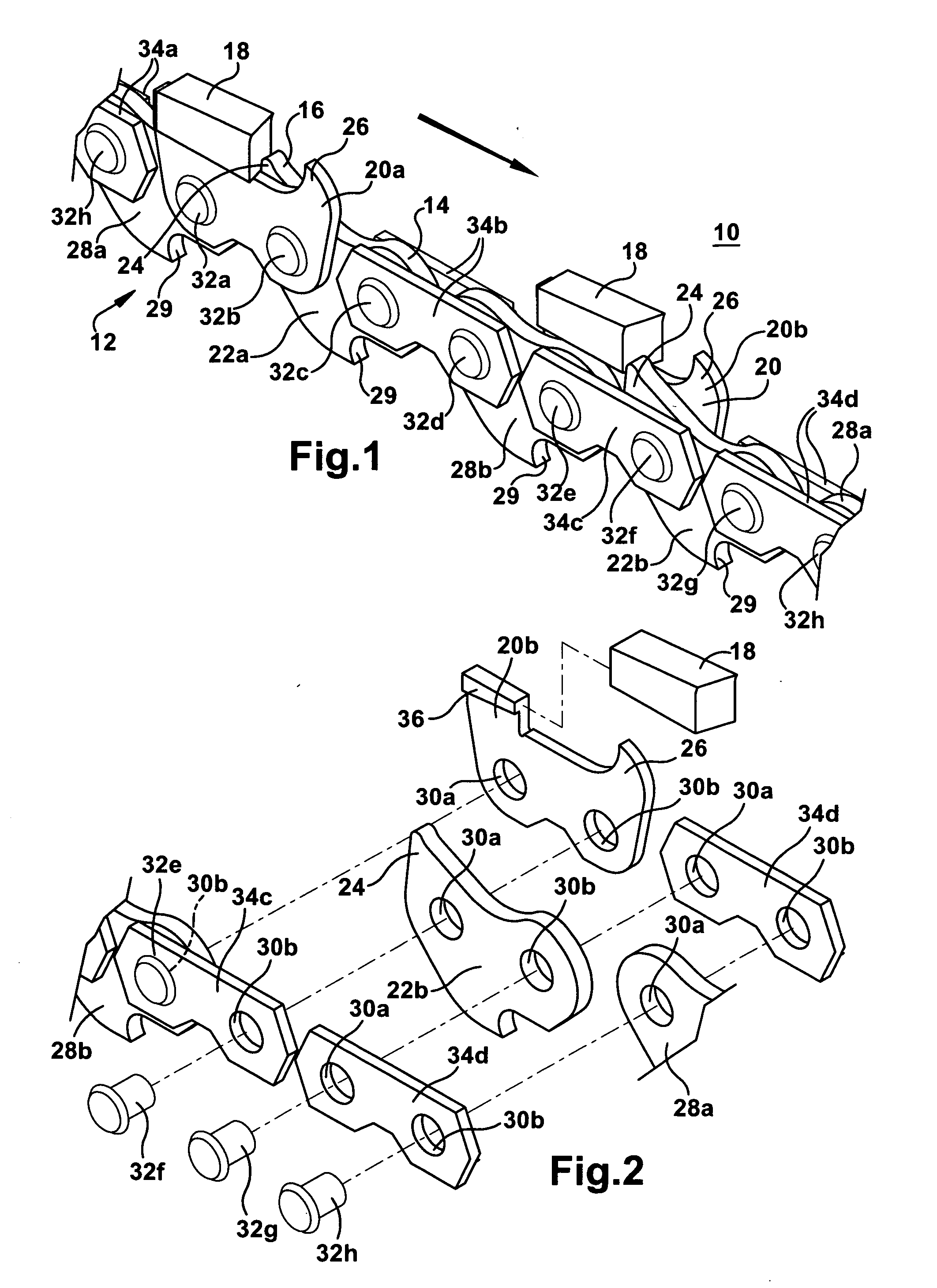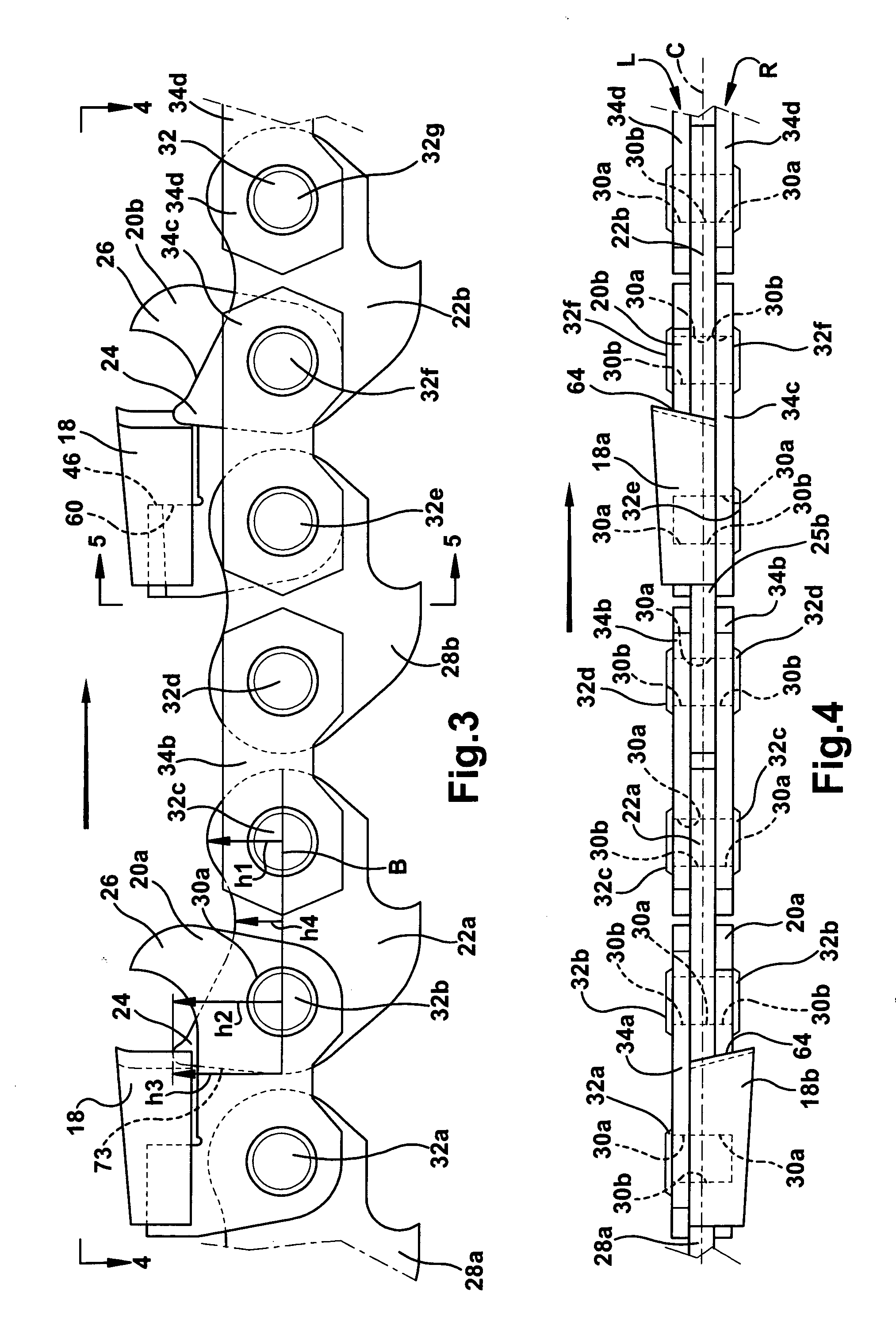Components having sharp edge made of sintered particulate material
- Summary
- Abstract
- Description
- Claims
- Application Information
AI Technical Summary
Benefits of technology
Problems solved by technology
Method used
Image
Examples
first embodiment
[0109]In a method of safely operating saw chain of the first embodiment, the saw is operated to move the chain by powering the motor to rotate the chain upon engagement of the drive links of the chain with the chain saw sprocket and optional sprocket at the end of the guide bar (not shown) in a known manner. Initially the teeth are all new, sharpened or contain a maximum amount of cutting or abrasion material (e.g., sharpened teeth). The saw is used to cut or abrade the intended material. During operation of the saw, at which time the chain rotates around the bar, dislodging of the teeth from the holders in the chain travel direction is prevented by the safety lobes. This ensures safe operation in that the dangerous condition in which whole teeth are dislodged in the chain travel direction is avoided. Breakage of portions of the teeth may be unavoidable, as occasionally occurs in the breakage of soldered tips from steel teeth. However, this condition can be accounted for with proper...
second embodiment
[0139]Referring now to a second embodiment featuring a carbide insert on chain without bonding, with a straight key, held on with safety link, the cutting links include a base member comprised of sintered particulate metal material. A one-piece cutting insert is comprised of sintered particulate material including carbide. The cutting insert is adapted to be removably disposed on the base member. The cutting insert includes a sharp cutting edge. The base member includes holes for receiving the rivets. A safety lobe is located in proximity to the cutting insert that prevents dislodging of the cutting insert in a direction of travel of the chain. The safety lobe extends from a link that is located upstream of the cutting link. A depth gauge is located upstream of the cutting insert. The safety lobe is disposed between the depth gauge and the cutting insert at all positions of the chain during a cutting operation.
third embodiment
[0140]Referring to the invention, carbide chain has a metal particulate or steel holder, particulate metal insert and carbide tip on chain including the safety link, comprises the plurality of links wherein the cutting links include a base member and a cutting insert comprising sintered particulate metal material. The cutting insert is adapted to be removably disposed on the base member. A cutting tip includes a sharp cutting edge and is comprised of sintered particulate carbide material. The base member includes holes for receiving the rivets. One of the cutting insert and tip includes a protrusion and the other of the cutting insert and cutting tip includes a recess configured to receive the protrusion. The cutting tip is rigidly connected to the cutting insert. One of the cutting insert and base member includes a first projecting seat surface and the other of the cutting insert and base includes a second recessed seat surface configured to receive the first seat surface. A safety...
PUM
| Property | Measurement | Unit |
|---|---|---|
| Size | aaaaa | aaaaa |
| Density | aaaaa | aaaaa |
| Shape | aaaaa | aaaaa |
Abstract
Description
Claims
Application Information
 Login to View More
Login to View More - R&D Engineer
- R&D Manager
- IP Professional
- Industry Leading Data Capabilities
- Powerful AI technology
- Patent DNA Extraction
Browse by: Latest US Patents, China's latest patents, Technical Efficacy Thesaurus, Application Domain, Technology Topic, Popular Technical Reports.
© 2024 PatSnap. All rights reserved.Legal|Privacy policy|Modern Slavery Act Transparency Statement|Sitemap|About US| Contact US: help@patsnap.com










